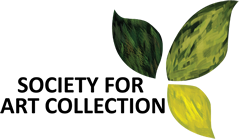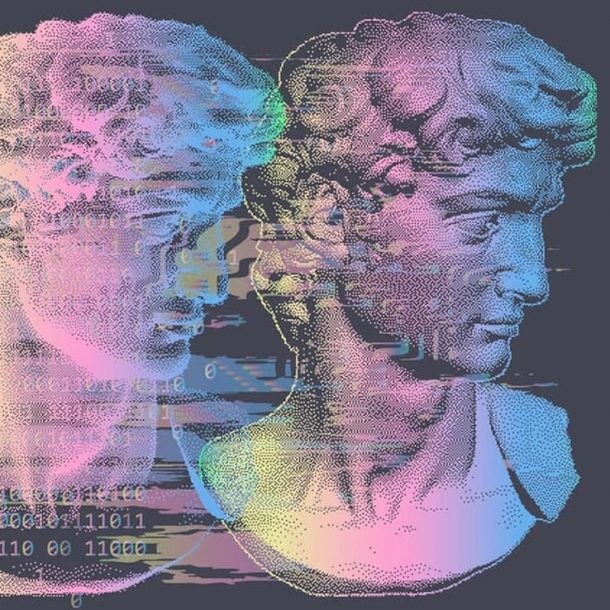
Ana Collazo
Profile
Ana Collazo is an art lover who studied fine arts for more than a decade. She holds two bachelor degrees in Economics and Journalism from Carlos III University in Madrid. She has also completed a double master degree in International Business and International Communication at Macquarie University in Sydney and Universidad del Desarrollo in Chile. She joined Nivea Spain shortly after her studies. She then moved to Russia to be part of the commercial office of the Galician government in Moscow where she worked as international trade consultant. She later started her work in Africa where as a liaison for international investors identifying business opportunities across the region. Which also extended to other continents.
She is the co-founder of Malimbe, the official in-flight magazine of four local airlines. We interviewed her on her second initiative “Aworanka” which she said is born to revolutionize the world of art in Africa.
How did you find yourself in Lagos? What is the story?
AC: I started my work in Africa in 2011 acting as liaison for international investors providing them with regular reports, identifying business opportunities and actions for business development. I lived in Senegal, Cameroon, Tanzania, Mozambique, Zambia and Nigeria. That job took me to many other countries such as Indonesia, Qatar, Mexico, UAE, etc… but I always wanted to come back. In 2018 I partnered with several investors to launch Malimbe, the official in-flight magazine of several local airlines in Nigeria and I finally settled here. Aworanka is my second initiative in the country, which was born to revolutionize the world of art in Africa and facilitate the access to African art to local and international collectors
What does art mean to you, and how did you get into the art space?
AC: Art and painting have always been a personal passion since I was a kid. I studied fine art for more than ten years with different artists. I was five years old when I did my first oil painting in the painting studio that the Venezuelan artist, Roberto Martínez Estanga, had in my home town. Then I joined the academy of the Spanish artist Guillermo Pedrosa. At the time I used to participate in painting contests and exhibitions. One of the awards took me on a trip throughout Spain and France with other artists visiting all the museums and attractions in both countries. When I moved to Africa, I was immediately captivated by African art and its heritage. I instantly knew I wanted to get involved.
How do you think the pandemic has affected the Nigerian art market/industry?
AC: During the pandemic galleries realized that they cannot only depend on walk-in sales. They need to be able to market online and sell abroad. We came to support them in this challenge by creating their gallery profile page within www.aworanka.com, developing their online catalogue, taking care of the marketing, export documentation, shipping and customer support. Now they have a new platform where they can easily market their works and artists.
What inspired the birth of Aworanka?
AC: Our main objective with Aworanka is to promote African art, honor its heritage and create a transparent process for both the art collectors and galleries. Before, it was very difficult to compare prices or to find artworks with specific characteristics. Right now anyone can go on Aworanka and filter by size, color, theme, medium, price, etc… This makes it easier to find the perfect item for the perfect spot in your house or your office. We wanted to make the process of buying African art easy and enjoyable.
Describe a typical work day at Aworanka for us?
AC: Aworanka has a team that takes care of different needs to support galleries, artists and collectors.
We work daily with galleries and we add around two to three galleries every month to our website. In order to do that we visit them and review their catalogue, take pictures and upload all information onto the website. In January we started receiving requests from South Africa for galleries to join. Due to this demand, our second phase of expansion focuses on South Africa, Kenya, Rwanda and Cameroon.
We also work daily with artists to collect information and review the authenticity of the pieces. At the moment we have over 150 biographies of African artists on our website and we continue uploading information every day.
For our collectors, besides handling orders we are constantly creating content. We have two daily blogs with African Art news and interviews; we are very active on our social media and we are constantly working on making their experience as simple and enjoyable as possible.
On our website we also have a calendar with African art events, exhibitions, fairs, competitions residences or applications. We update this daily for collectors and artists to stay easily informed.
Do you collect art?
I buy as many artworks as I can afford to do. Aworanka has also facilitated this process for me because I can filter by artists, medium and I can easily compare prices. This allows me to make more informed decisions in terms of art.
What is the best place you go to view art?
In Lagos I am totally in love with the Yemisi Shyllon Museum of Art (YSMA) at Pan-Atlantic University; not only because of the collection, which is extraordinary, but also because of the way the museum was designed by Jess Castellote. Many museums are located in historical buildings that have been arranged as a museum, other museums are built by architects that not always are art collectors or passionate about artworks. The design of the Yemisi Shyllon Museum of Art (YSMA) was done thinking of the artworks and its placement. Inside this museum you can see the same painting from different floors and different angles. This allows you to appreciate the pieces in a different way.
What is the process of buying art on Aworanka?
AC: Aworanka’s buying process is intuitive and simple and it includes a number of security and transparency measures that make this marketplace one of the best platforms to acquire African Art. Collectors can discover the artworks using various sorting options including filters by size, price, themes, colors, etc., they add the artworks to the shopping cart and proceed to checkout. At the checkout buyers can fill-in their personal information, address and shipping method; select the payment mode and click on place order. Buyers can pay online with their card or do a regular transfer into our Nigerian account. We are currently considering crypto currency payments.
What should we be expecting from Aworanka as the year unfolds?
AC: Africa is very large continent with a great and diverse art culture. Contemporary African art has gained international traction over the few past years but documentation, research and cataloguing has been more limited and constrained than in other continents. This means that collectors don’t have as much information available about African Art as they might have about artworks from other continents. This frequently creates confidence issues. This is why Aworanka has been conceived not only as a platform to sell art but as a source of information and research. Currently, we have already published over one hundred and fifty biographies of African artists, we have started publishing interviews and we expect to launch our reports section this year. Right now we are working on an extensive report comparing Nigerian artists and the prices they have reached in international auctions over the years. This will give collectors access to extra data to make the art investment decisions. Collectors want to make informed decisions. We are here to facilitate their decision process.
What do you think about this new phenomenon that hit the traditional art world called NFT? Do you think it is art?
AC: NFTs have been in existence for nearly ten years but it is only recently that it has been considered a phenomenon due to the NFT market value tripling in 2020. This has created a bubble because everyone with minimal digital skills is currently trying their luck seeing the astronomical prices that some artworks have reached. This large sudden demand has increased the price of minting. With the very high gas fees at the moment non-artists trying their luck at NFTs have found themselves spending large amounts of money minting and displaying their artworks on digital sites without any sales. We expect that bubble to burst leaving only real artists to fully develop the NFT landscape. These artists should put as much as effort as possible into getting verified now.
Personally I am a collector of NFTs and I have minted several digital artworks that I have done in collaboration with a photographer. When you love art, you try to be up to date and look at all the angles and new developments happening in the art world.

